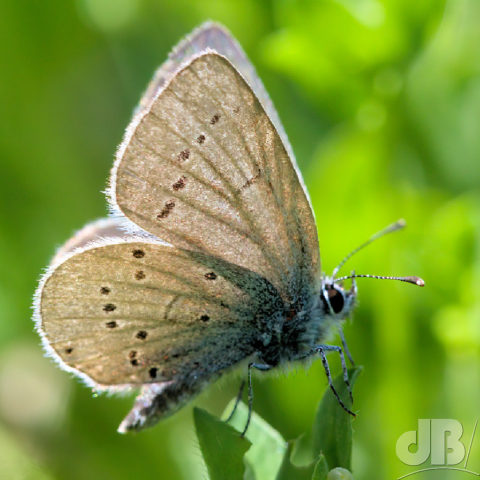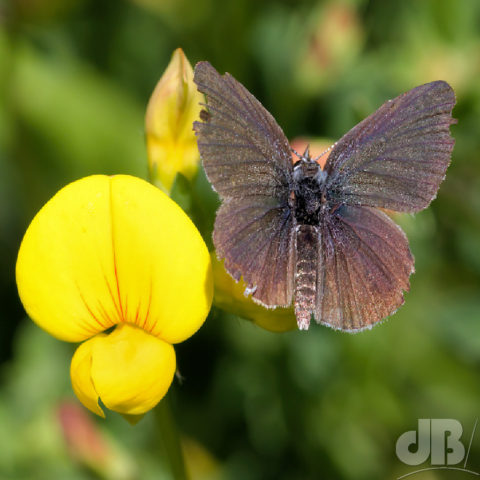I have now added a sixth butterfly species to the list I’ve photographed this year for the first time, beating the total of five new species last year. The Small Blue (Cupido minimus) joins Adonis Blue, Black Hairstreak, Grizzled Skipper, Wall, and White Admiral on my list.
The Small Blue has to be the most brown of the Blues. The male has a bit of a bluish suffusion close to the body, but is basically a brown butterfly like the female. The wings have a white fringe and the underside has black spots that are unlike those of the other blues and resemble the Holly Blue but with beige as the ground colour rather than blue. However, its vernacular name rings true in the adjective “Small”. This is definitely the UK’s smallest butterfly. The scientific binomial might be translated whimsically as being “the smallest Cupid” but strictly speaking translates from the Latin as “a desire for the least”.

I saw the Small Blue for the first time on a visit to Trumpington Meadows nature reserve not far from Addenbrooke’s hospital in Cambridge. A Cambs Wildlife Trust rep there, who goes by the twitter handle @HarryHedgehog7, pointed me to a small footbridge that crosses the M11 motorway from the Meadows to an additional chunk of wild area beyond the old crop research site. There is abundant Kidney Vetch (Anthyllis vulneraria, also known as woundwort), which is one of the larval foodplants, although the caterpillars are cannabilistic and will eat each other, and while the colony did not appear to number in the hundreds as can occur, there were at least a couple of dozen that showed their true colours among the vetch.

Also seen, Common Blue (not that common, but the males are definitely blue), Small Tortoiseshell (quite a large butterfly, but its pattern is reminiscent of a coloured-in tortoiseshell), Large, Small, and Essex Skipper, Marbled White (which are sort of marbled but they’re actually a type of “Brown” Satyrinid butterfly), and a lot of Six-spot Burnet moths, which definitely have six spots on each wing.
Incidentally, the M11 is an arterial road that connects Cambridge with London, one might wonder whether the Cambridge-educated politicians and civil servants had the public’s interest or their own travel interest at heart when this road was first planned…